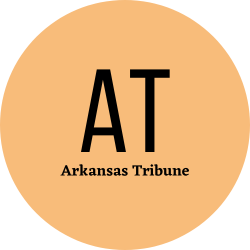What is Website Design?
by Admin

What is Website Design?
Website design is the process of arranging content and images on a web page. It is essential for creating a good user experience and boosting search engine optimization.
Web designers use their knowledge of HTML and CSS to create websites that are easy to navigate, look great, and rank well in search engines. They also create mobile-friendly designs that adapt to different screen sizes.
Colors
Colors are a powerful tool that can affect a website's design and its users' perceptions. They can draw attention, express intent, create excitement, push conversions, and even earn a customer's loyalty.
While it's easy to overthink colors, a few key considerations can ensure that your choices are impactful and effective.
Red, for example, can evoke feelings of love and passion. But it can also signal danger or anger, so choose wisely.
Yellow is another warm, energetic color that can exude energy and curiosity. It's best used in moderate amounts, though, as too much can make your site feel threatening or overwhelming.
Black, on the other hand, can give your website an edgy or sophisticated vibe. It can also give a feeling of luxury and mystery, so it's a good choice for companies that cater to the wealthy.
Typography
Typography is a vital part of website design. It plays a crucial role in informing users, optimizing readability and accessibility, and framing the overall user experience.
It also helps to establish brand identity and frame the site’s overall personality. Choosing the right typeface to use for each of your website’s content is an essential part of creating a consistent and professional impression.
Typography also helps to create a distinct informational hierarchy using sizing, color, contrast, and alignment. This enables users to identify the most important information and avoid reading text they can’t understand.
Layout
Layout is an important part of website design that impacts how users interact with your website. It also determines how effectively your content is presented to visitors.
When designing a layout, you need to choose one that will support the story you want to tell. For example, if you're designing a website for an eCommerce store, you might want to choose a layout that will make your products look more appealing and help you drive sales.
In contrast, if you're creating a website for a portfolio, you might want to consider using a layout that highlights the most significant feature of your work. This can be done by placing a large, eye-catching image front-and-center on the page.
Navigational elements
Website navigation is a critical element of design because it serves the simple yet very important goal of helping visitors find their way to where they want to be. If your website fails to do this, it can quickly drive users away from your site and into a competitor's.
A good navigation design encourages users to explore your site further and stay engaged with its content. It also makes it easy for them to find the information they need.
The most effective navigation design will be easy to understand and consistent throughout the entire site. There are many different types of navigation that you can use to accomplish this. Each is suited for a particular type of website and should be designed with your target audience in mind.
Content
Content is one of the most crucial elements of a website. It helps to attract and retain visitors, educate them about the product or service, and turn them into paying customers.
While web design and content are often put in a competitive relationship, they should be complementary rather than opposing each other. They need to work together to make sure users are engaging and informed from the beginning.
The content on a website should be able to answer the questions and concerns of its target audience. It should also be optimized for search engine visibility.
https://www.kate-marketing.com/
website design
search engine optimization
chamber of commerce
What is Website Design? Website design is the process of arranging content and images on a web page. It is essential for creating a good user experience and boosting search engine optimization. Web designers use their knowledge of HTML and CSS to create websites that are easy to navigate, look great, and rank well in…
Recent Posts
- Solar El Paso: Leading the Charge Towards a Sustainable Future
- Houston’s Marketing Scene by Storm with Strategic Billboard Campaign
- Elevating Standards of Cleanliness at Competitive Prices
- Advantage Local Marketing: Revolutionizing SEO for San Antonio Businesses
- American Plastic Molds: Redefining Excellence in Custom Plastic Injection Molding in Florida
